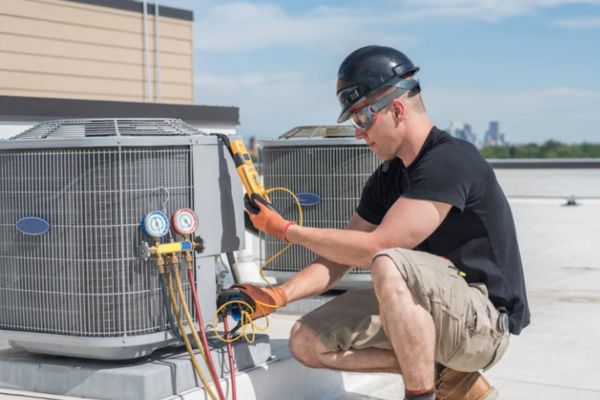Keeping your home cool during hot summer days is essential for comfort, and one of the most affordable ways to achieve this is by installing a window AC unit. But before making a purchase, it’s essential to understand the various costs involved. In this guide, we’ll break down everything you need to know about the cost of window AC units, including factors influencing price, average costs, and ways to save.

Factors That Influence Window AC Unit Costs
Several key factors affect the overall cost of a window AC unit. Here are the most important ones to consider.
Cooling Capacity (BTUs)
The size of the window AC unit is one of the most significant cost determinants. Units are measured by their cooling capacity, expressed in BTUs (British Thermal Units). The higher the BTU rating, the larger the area the unit can cool. Smaller units with fewer BTUs are cheaper but may not be sufficient for larger spaces.
Energy Efficiency
Energy efficiency plays a major role in both upfront costs and long-term savings. Units with higher SEER (Seasonal Energy Efficiency Ratio) ratings tend to cost more initially but can save you money on energy bills over time. Energy Star-rated units, for example, use less electricity and are more environmentally friendly, which adds to their appeal despite a slightly higher price tag.
Features and Smart Technology
Some window AC units have advanced features like remote controls, Wi-Fi connectivity, and programmable thermostats. While these conveniences can make the unit more user-friendly, they also increase the cost. Consider whether these extras are worth the investment based on your lifestyle.
Brand and Warranty
Like any major appliance, your chosen brand can impact the cost. Well-known, reputable brands may have higher prices but often have better reliability and longer-lasting performance. Extended warranties are another factor to consider. A longer warranty period can provide peace of mind but may come at an additional cost.
Average Cost Breakdown
Understanding what you’ll pay for a window AC unit involves more than just the sticker price. Here’s a breakdown of typical costs:
Unit Cost by Size
Window AC units come in different sizes based on their cooling capacity, which affects the price:
- Small Units (5,000–8,000 BTUs): These are perfect for small rooms like bedrooms or home offices and 100-350 square feet of cooling spaces. The cost ranges between $150 and $300.
- Medium Units (8,000–12,000 BTUs): These can cool 350-550 square feet areas, such as living rooms or large bedrooms, and are typically priced from $250 to $400.
- Large Units (12,000+ BTUs): These units can cool larger spaces (over 550 square feet) and are ideal for open-concept homes. Costs for larger units range from $400 to $700.
Installation Costs
While window AC units are often DIY-friendly, some homeowners prefer professional installation to ensure everything is secure and properly functioning. Depending on the job’s complexity, professional installation can cost between $75 and $150, but it can be higher if additional modifications are required. If you’re handy with tools, you can save this expense by installing the unit yourself, but always be cautious when handling heavy equipment.
Other Costs to Consider
- Energy Bills: Expect to spend $15–$60 monthly, depending on the unit size and energy consumption.
- Maintenance: Regular cleaning of filters and minor repairs can add up over time. Routine service costs around $50–$150.
Cost-Saving Tips for Homeowners
You don’t have to break the bank to stay cool. Here are some practical ways to cut costs on your window AC unit purchase:
Energy Star Rated Units
Choosing an Energy Star-rated model is one of the best ways to save on long-term energy costs. These units use up to 10% less energy than standard models, which can make a noticeable difference in your electric bill.
Proper Sizing
Selecting the right size unit is vital to avoiding unnecessary costs. An oversized unit will cool the room too quickly, leading to wasted energy, while an undersized unit will have to work harder to maintain a comfortable temperature. Ensure you know the square footage of the space you’re cooling before buying.
Smart Thermostats and Timers
A programmable thermostat or timer can help optimize your AC’s usage, reducing unnecessary energy consumption. Setting the unit to turn on only when needed or using a timer to shut it off automatically when you’re away can result in considerable savings.
Conclusion
When purchasing a window AC unit, it’s important to consider the upfront costs, long-term energy consumption, and maintenance expenses. While more expensive units may have higher BTUs, energy efficiency ratings, or additional features, balancing these costs with your budget and cooling needs is crucial.
If you’re still unsure which unit suits you, consult an HVAC professional to help you decide based on your needs. Home Star is your top directory for connecting with trusted HVAC professionals who can guide you through installation, repair, and maintenance for your HVAC needs.



